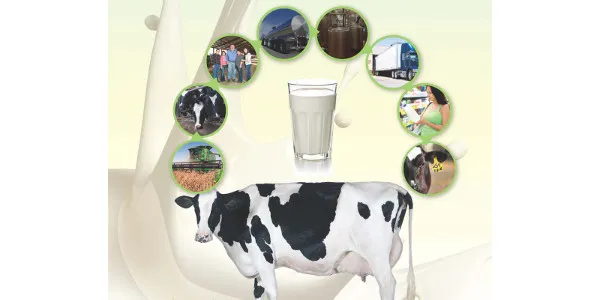Dairy products have been a staple in human diets for centuries, providing essential nutrients and flavors that enrich various dishes. From creamy butter to indulgent cheese and wholesome yogurt, the journey of dairy products from farm to table is a fascinating process that involves precision, care and a deep understanding of dairy farming and food production.
This article delves into the intricate steps that lead to the creation of these beloved dairy delights, highlighting the importance of quality, sustainability, and innovation in the dairy industry.
Table of Contents
The art of dairy farming: Nurturing healthy cows for optimal milk production
The journey of dairy products begins with the heart of the operation: dairy farming. Dairy farmers are responsible for raising and caring for cows to ensure they lead healthy and content lives, ultimately producing high-quality milk. Creating a nurturing environment for cows involves providing proper nutrition, access to fresh water, comfortable shelter, and regular health check-ups.
One critical aspect of dairy farming is the cow’s diet. Farmers ensure that their cows receive a balanced and nutritious diet that includes a variety of feed, such as hay, silage, and grains. This careful attention to nutrition results in milk rich in essential vitamins and minerals, contributing to the nutritional value of dairy products consumed by millions worldwide.
Modern dairy farms incorporate innovative practices and technology to improve efficiency and reduce environmental impact. Some dairy farms have adopted automated milking systems, which allow cows to be milked when they feel comfortable, promoting stress-free milking sessions. Sustainability practices like using renewable energy sources and recycling waste products have become a growing focus in the dairy industry, demonstrating a commitment to animal welfare and environmental stewardship.
The dairy processing journey: From raw milk to creamy goodness
Once the fresh milk is collected from the dairy farm, it embarks on a carefully monitored journey through dairy processing plants to be transformed into various dairy products. The first step in this process is pasteurization, where the raw milk is heated to a specific temperature to eliminate harmful bacteria while preserving its nutritional content. Pasteurization ensures the milk is safe for consumption and extends its shelf life.
After pasteurization, the milk can take different paths to become various dairy products. To create butter, the cream is separated from the milk and churned until it reaches the desired consistency. Cheesemaking involves adding cultures and enzymes to the milk to curdle it, separating the curds from the whey, and then aging the curds to develop unique flavors and textures.
Cream is made by separating the fat from whole milk, and it is typically produced by allowing the milk to stand so that the cream rises to the top. A whipped cream charger is a small, pressurized canister filled with nitrous oxide that, when used with a whipped cream dispenser, helps to quickly and easily create fluffy whipped cream by infusing the cream with air. You can purchase a nang from https://www.nangwizard.net/ to help you create the perfect whipped cream topping.
Quality control and safety measures: Ensuring dairy products meet stringent standards
As dairy products pass through the processing stages, stringent quality control measures are implemented to ensure they meet high taste, safety, and consistency standards. Dairy processors conduct frequent testing and monitoring of the products to check for potential contamination or deviations from the desired quality.
In many countries, regulatory bodies set standards and guidelines for dairy processing, ensuring that products comply with food safety regulations and labeling requirements. These regulations encompass everything from the handling of milk to the packaging and storage of finished dairy products. Adhering to these strict guidelines helps maintain the integrity of dairy products and protects consumers from any potential health risks.
Food manufacturers often invest in state-of-the-art technology to enhance food safety and traceability. Advanced equipment, such as automated production lines and quality control systems, helps identify and address issues quickly, preventing them from affecting large batches of dairy products. As a result, consumers can enjoy dairy products with confidence, knowing they have been produced with the utmost care and attention to quality.
To that end
The journey of dairy products from farm to table is an intricate and captivating process that involves dedication, expertise, and a commitment to quality. From the nurturing care of dairy cows on farms to the state-of-the-art processing techniques employed by dairy manufacturers, each step plays a vital role in delivering delicious and nutritious dairy products to consumers worldwide.
As the demand for dairy products continues to evolve, the industry embraces innovation to meet the diverse needs of consumers, welcoming the rise of dairy alternatives and environmentally sustainable practices. Through traditional craftsmanship and cutting-edge technology, the world of dairy production continues to enrich our lives with its vast array of creamy creations and nutritious delights, making it an essential part of the global food landscape.








